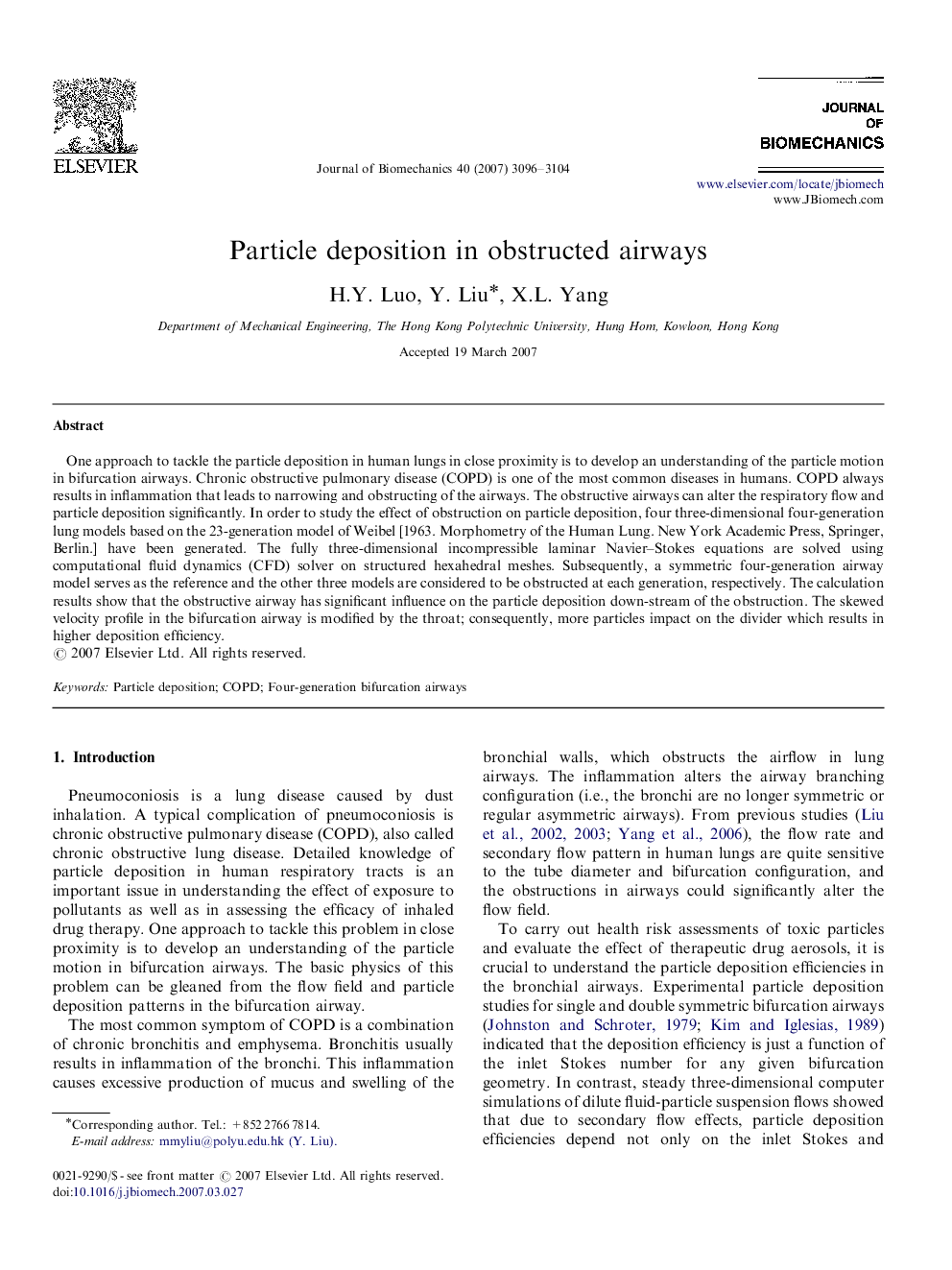| کد مقاله | کد نشریه | سال انتشار | مقاله انگلیسی | نسخه تمام متن |
|---|---|---|---|---|
| 875296 | 910374 | 2007 | 9 صفحه PDF | دانلود رایگان |

One approach to tackle the particle deposition in human lungs in close proximity is to develop an understanding of the particle motion in bifurcation airways. Chronic obstructive pulmonary disease (COPD) is one of the most common diseases in humans. COPD always results in inflammation that leads to narrowing and obstructing of the airways. The obstructive airways can alter the respiratory flow and particle deposition significantly. In order to study the effect of obstruction on particle deposition, four three-dimensional four-generation lung models based on the 23-generation model of Weibel [1963. Morphometry of the Human Lung. New York Academic Press, Springer, Berlin.] have been generated. The fully three-dimensional incompressible laminar Navier–Stokes equations are solved using computational fluid dynamics (CFD) solver on structured hexahedral meshes. Subsequently, a symmetric four-generation airway model serves as the reference and the other three models are considered to be obstructed at each generation, respectively. The calculation results show that the obstructive airway has significant influence on the particle deposition down-stream of the obstruction. The skewed velocity profile in the bifurcation airway is modified by the throat; consequently, more particles impact on the divider which results in higher deposition efficiency.
Journal: Journal of Biomechanics - Volume 40, Issue 14, 2007, Pages 3096–3104